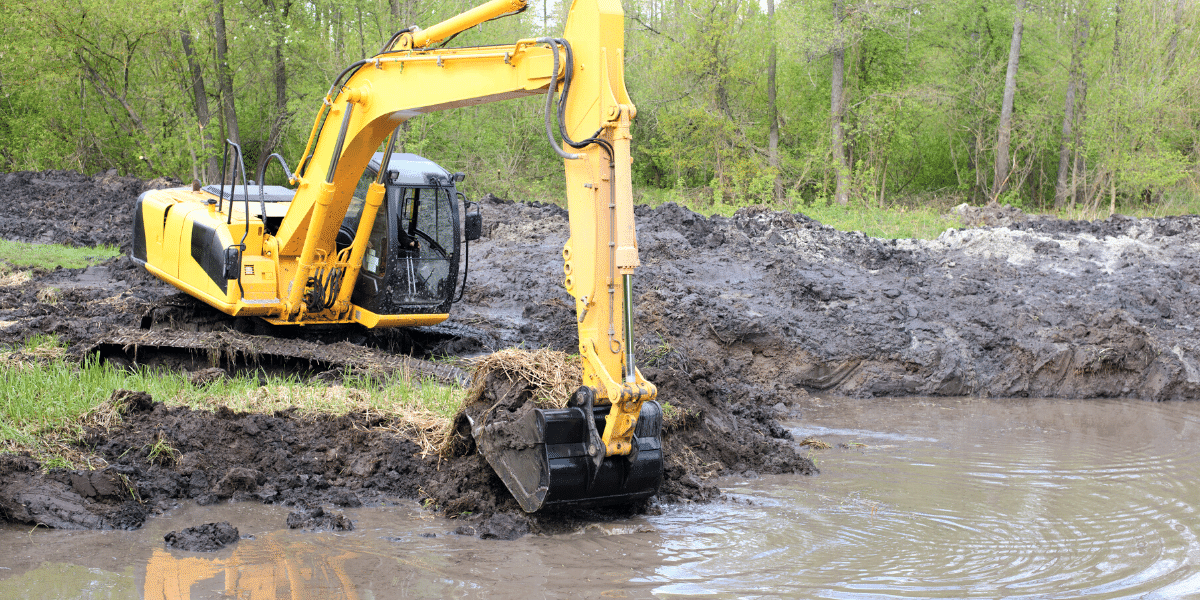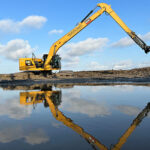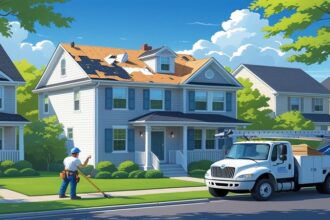When most machines sink, Marsh Machinery rises to the challenge. Whether it’s restoring wetlands, planting rice in flood-prone fields, or helping after a hurricane, this equipment operates in the places regular vehicles fear to tread. Marshes, swamps, bogs, and floodplains present unique terrain challenges—soft, unstable, and often submerged. That’s why engineers have designed specialized tools that float, crawl, and plow through muck to get the job done.
Wetland Conservation: Machines that Guard the Green
Why Wetlands Matter
Wetlands aren’t just squishy land. They’re biodiversity powerhouses and natural sponges that absorb floodwaters, store carbon, and filter pollution. But due to development, agriculture, and climate change, wetlands are disappearing fast.
That’s where Marsh Machinery comes in.
Restoring What’s Lost
Restoration projects often require reshaping terrain, planting vegetation, and reintroducing native water flow—all of which is nearly impossible without the right machinery.
- Amphibious excavators remove invasive plants and reshape eroded banks.
- Marsh tractors plant native grasses without disturbing the nesting ground.s
- Dredging machines clear clogged channels to restore natural hydrology
These machines allow environmental teams to reach and repair areas too delicate—or dangerous—for humans alone.
Agricultural Innovation: Marsh Equipment in Rice and Aquatic Farming
Feeding the World, One Paddy at a Time
Rice farming is a marshy business. Fields need to be submerged for part of the growing cycle. Traditional equipment would sink or destroy the delicate topsoil, but marsh machinery enables precision farming on these challenging landscapes.
Tools of the Trade in Wet Farming
- Tracked planters and harvesters can work in standing water.
- Low-compaction vehicles minimize disruption to the field ecosystem.s
- Ditchers and canal makers help manage irrigation with minimal erosion.on
These tools help increase yields while reducing ecological impact, especially in regions where rice, taro, or cranberries are staples.
Disaster Response: Marsh Machinery in Emergencies
When Roads Disappear, Marsh Machines Step In
After hurricanes, floods, or tsunamis, communities are often left surrounded by water, mud, and muck. Traditional emergency vehicles can’t reach them. Marsh machinery can.
- Marsh buggies deliver supplies across submerged land.
- Amphibious rescue platforms evacuate people from a remote home.s
- Floating equipment helps remove debris and repair critical infrastructure
Climate Change and the Rise of Resilient Equipment
Adapting to a Wetter Future
As sea levels rise and weather becomes more extreme, the need for marsh machinery will only grow. Areas once dry are now experiencing seasonal flooding. Agriculture is shifting. Infrastructure is being rethought.
Modern Engineering for Eco-Challenges
Today’s marsh equipment reflects cutting-edge engineering:
- Hybrid and electric models to reduce carbon footprints
- Modular designs for easy repair and transport
- AI-assisted navigation systems for precision work in sensitive areas
This innovation ensures we can continue to farm, build, and protect without destroying the ecosystems we depend on.
Cultural Significance: Machinery That Respects Local Landscapes
Indigenous and Rural Partnerships
In places like the Amazon, Nile Delta, or Bayou communities, marsh machinery is used not just by governments but by locals who understand the land best. These machines are adapted for use in partnership with traditional knowledge, enabling locals to reclaim degraded lands, expand aquaculture, and protect their homes.
Balancing Progress and Preservation
The key challenge is ethical use: ensuring that the marsh machinery doesn’t become a tool for over-exploitation but instead supports long-term sustainability. Training, governance, and environmental standards are crucial.
Innovations on the Horizon
Floating Cities and Marsh Infrastructure
Engineers are now developing floating roads, amphibious buildings, and wetland-based renewable energy systems. Marsh machinery will be key in creating and maintaining these ambitious projects.
Autonomous and Remote-Control Marsh Machines
With drone technology and remote operation, future marsh machines could be controlled from miles away, reducing human risk and increasing efficiency.
Conclusion: Machines That Make Survival Possible
Marsh machinery isn’t flashy. It doesn’t race across highways or soar through the sky. But in the mud, the flood, and the aftermath—it’s the quiet backbone of progress.
From saving endangered wetlands and producing food on watery fields to helping survivors after disasters and adapting to a warming world, this equipment does more than dig. It defends, restores, and enables.
As environmental challenges grow, these machines remind us that sometimes, to move forward, you have to stay afloat—literally.
FAQs
1. What is marsh machinery used for?
Marsh machinery is used in wetlands, flood-prone areas, and soft terrain where standard equipment cannot operate. Applications include conservation, agriculture, disaster recovery, and construction.
2. How is marsh machinery different from regular heavy equipment?
Unlike standard machines, marsh equipment is built for buoyancy and low ground pressure. Features like amphibious tracks or pontoons allow them to move over mud, shallow water, and soft soils without sinking.
3. Is Marsh machinery environmentally friendly?
Modern marsh machines are increasingly built with eco-friendly materials, hybrid engines, and precision tools that minimize ecological disturbance. They are essential in restoring and maintaining fragile ecosystems.
4. Where can you commonly see marsh machinery in use?
You’ll often find it in wetland restoration sites, rice fields, mangrove zones, disaster-affected regions, and areas prone to seasonal flooding, like Louisiana, Bangladesh, and the Mekong Delta.

















